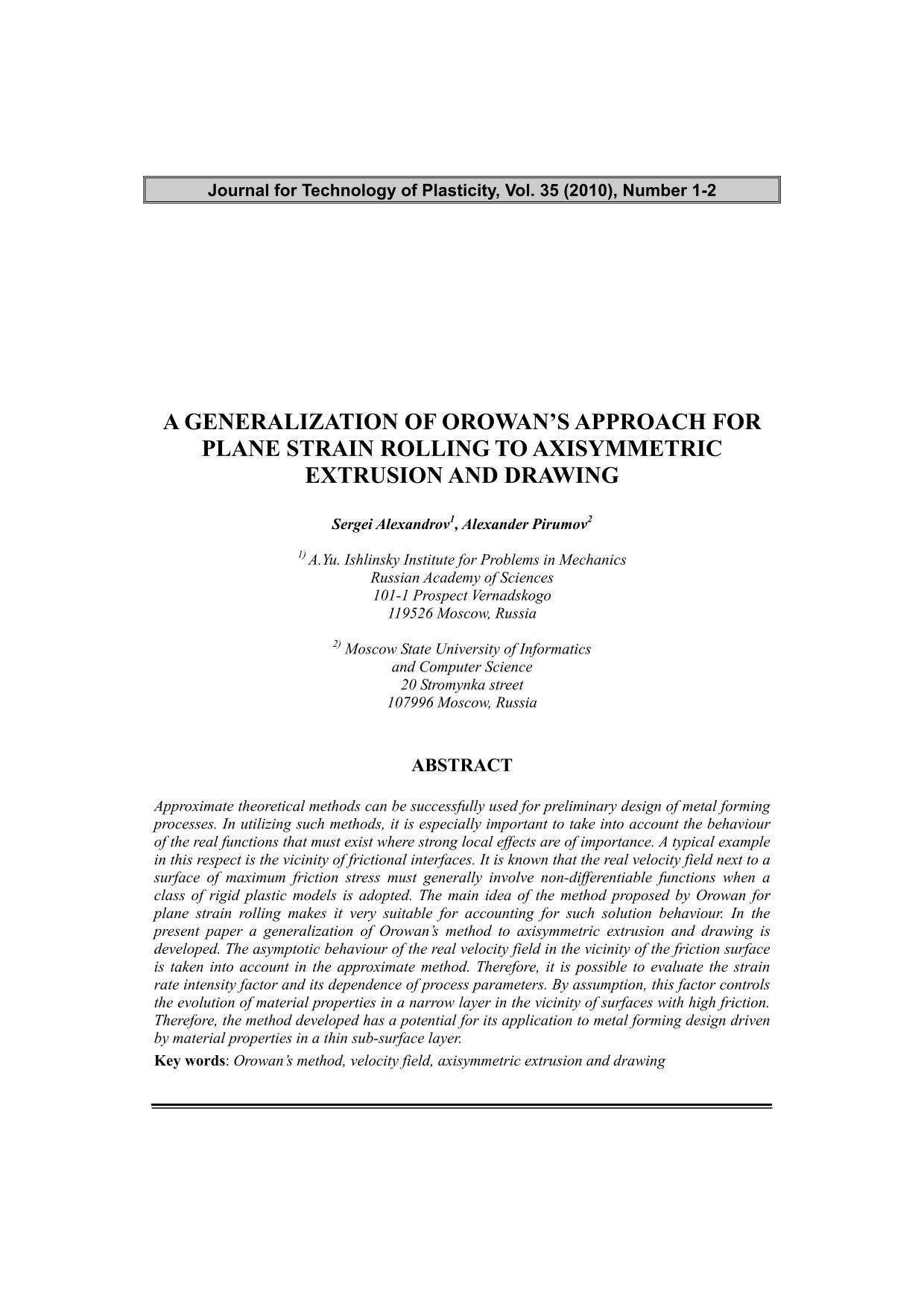A generalization of Orowan’s approach for plane strain rolling to axisymmetric extrusion and drawing

Published 2010-12-17
abstract views: 7 // Full text article (PDF): 3
Keywords
- Orowan’s method,
- velocity field,
- axisymmetric extrusion and drawing
How to Cite

This work is licensed under a Creative Commons Attribution 4.0 International License.
Abstract
Approximate theoretical methods can be successfully used for preliminary design of metal forming processes. In utilizing such methods, it is especially important to take into account the behaviour of the real functions that must exist where strong local effects are of importance. A typical example in this respect is the vicinity of frictional interfaces. It is known that the real velocity field next to a surface of maximum friction stress must generally involve non-differentiable functions when a class of rigid plastic models is adopted. The main idea of the method proposed by Orowan for plane strain rolling makes it very suitable for accounting for such solution behaviour. In the present paper a generalization of Orowan’s method to axisymmetric extrusion and drawing is developed. The asymptotic behaviour of the real velocity field in the vicinity of the friction surface is taken into account in the approximate method. Therefore, it is possible to evaluate the strain rate intensity factor and its dependence of process parameters. By assumption, this factor controls the evolution of material properties in a narrow layer in the vicinity of surfaces with high friction. Therefore, the method developed has a potential for its application to metal forming design driven by material properties in a thin sub-surface layer.

